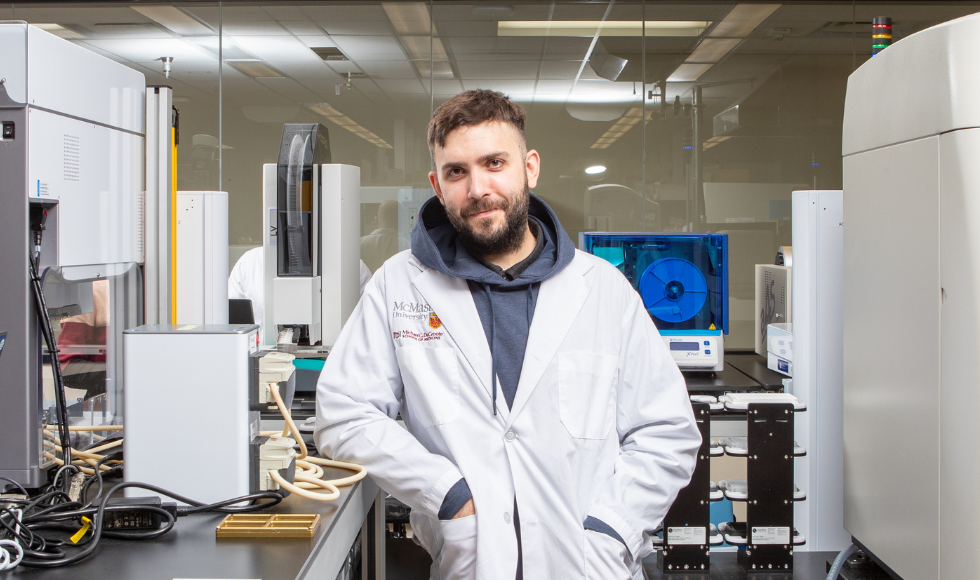Reviewed by Lexie CornerMar 25 2024
A new generative artificial intelligence model developed by researchers at Stanford and McMaster Universities can create billions of new antibiotic molecules that are easy and affordable to produce in the lab.
 Jonathan Stokes, an assistant professor in McMaster’s Department of Biomedicine and Biochemistry, is the lead author of a study in which researchers report they have developed a new generative AI model called SyntheMol that can design new antibiotics to stop the spread of Acinetobacter baumannii. Image Credit: Georgia Kirkos/McMaster University
Jonathan Stokes, an assistant professor in McMaster’s Department of Biomedicine and Biochemistry, is the lead author of a study in which researchers report they have developed a new generative AI model called SyntheMol that can design new antibiotics to stop the spread of Acinetobacter baumannii. Image Credit: Georgia Kirkos/McMaster University
The need for novel antibiotics has grown due to the global spread of drug-resistant bacteria, but current AI techniques are not always successful in identifying promising chemical compounds. This is especially true regarding the production of these novel AI-guided medications and their laboratory testing.
According to the World Health Organization, Acinetobacter baumannii is one of the most dangerous antibiotic-resistant bacteria in the world. Researchers have developed a new generative AI model called SyntheMol to stop the spread of this dangerous bacteria, according to a new study published in the journal Nature Machine Intelligence.
Known for its resilience, A. baumannii can lead to pneumonia, meningitis, and wound infections, all potentially fatal. Researchers highlight the scarcity of remaining treatment options.
Antibiotics are a unique medicine. As soon as we begin to employ them in the clinic, we’re starting a timer before the drugs become ineffective because bacteria evolve quickly to resist them.
Jonathan Stokes, Study Lead Author and Assistant Professor, Department of Biomedicine and Biochemistry, McMaster University
Stokes carried out the work with James Zou, an Associate Professor of Biomedical Data Science at Stanford University.
Stokes added, “We need a robust pipeline of antibiotics, and we need to discover them quickly and inexpensively. That’s where the artificial intelligence plays a crucial role.”
The generative model was created by researchers to swiftly and affordably access tens of billions of promising molecules.
They used 132,000 molecular pieces that fit together like Lego pieces but have vastly different properties from one another as their source material. The scientists found 30 billion two-way combinations of these molecular fragments by cross-referencing them with a set of 13 chemical reactions. This allowed them to create new molecules with the most promising antibacterial qualities.
Every molecule created by this model was then fed through a second AI model trained to anticipate toxicity. The process produced six non-toxic compounds with strong antibacterial activity against A. baumannii.
Synthemol not only designs novel molecules that are promising drug candidates, but it also generates the recipe for how to make each new molecule. Generating such recipes is a new approach and a game changer because chemists do not know how to make AI-designed molecules.
James Zou, Associate Professor and Study Co-Author, Department of Biomedical Data Science, Stanford University
The study was funded in part by the Weston Family Foundation, the Canadian Institutes of Health Research, and Marnix and Mary Heersink.
Journal Reference:
Swanson, K., et al. (2024) Generative AI for designing and validating easily synthesizable and structurally novel antibiotics. Nature Machine Intelligence. doi.org/10.1038/s42256-024-00809-7.